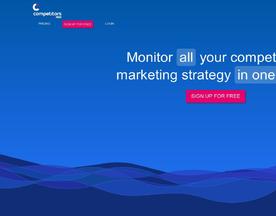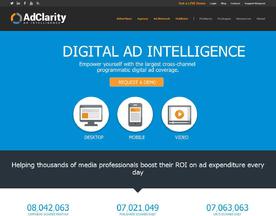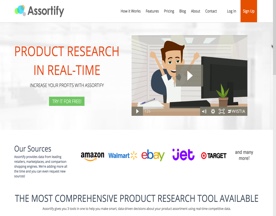What are competitive intelligence tools? Competitive intelligence tools analyze market data to help businesses understand rivals and industry trends for strategic decisions.
Competitive intelligence is an essential aspect of any business strategy. It involves gathering and analyzing information about competitors, market trends, and consumer behavior to gain a competitive advantage. Competitive intelligence tools are software applications that help businesses collect, analyze, and interpret data to make informed decisions. These tools provide valuable insights into market trends, competitor strategies, and consumer behavior, allowing businesses to stay ahead of the game.

Understanding Competitive Intelligence
Competitive intelligence is the process of gathering and analyzing information about competitors, market trends, and consumer behavior to gain a competitive advantage. This information can be used to inform business decisions, develop marketing strategies, and identify new opportunities. Competitive intelligence tools play a crucial role in this process by providing businesses with the data and insights they need to make informed decisions.
Competitive Intelligence Tools Overview
There are many different competitive intelligence tools available on the market, each with its own unique set of features and functionalities. Some of the most popular tools include SEMrush, Ahrefs, and SpyFu, which provide insights into competitor search rankings, backlinks, and keywords. Other tools, such as SimilarWeb and Alexa, focus on web traffic and audience insights. Regardless of the specific tool, the goal is the same: to provide businesses with the information they need to stay ahead of the competition.
Key Takeaways
- Competitive intelligence is the process of gathering and analyzing information about competitors, market trends, and consumer behavior to gain a competitive advantage.
- Competitive intelligence tools provide valuable insights into market trends, competitor strategies, and consumer behavior, allowing businesses to stay ahead of the game.
- There are many different competitive intelligence tools available on the market, each with its own unique set of features and functionalities.
Understanding Competitive Intelligence
Definition and Importance of Competitive Intelligence
Competitive Intelligence (CI) refers to the process of gathering, analyzing, and using information about a company’s industry, competitors, and market environment to gain a competitive advantage. It involves monitoring and analyzing data from various sources, including public records, social media, news articles, and industry reports.
CI is essential for businesses as it helps them identify potential opportunities and threats, anticipate changes in the market, and make informed strategic decisions. By understanding their competitors’ strengths and weaknesses, businesses can develop strategies to gain a competitive advantage.
Key Components of Competitive Intelligence
The key components of CI include collecting, analyzing, and disseminating information. The process begins with collecting data from various sources, including internal and external sources. The data is then analyzed to identify trends, patterns, and insights. Finally, the insights are disseminated to the relevant stakeholders, including executives, marketing teams, and sales teams.
To effectively gather and analyze data, businesses need to use competitive intelligence tools. These tools automate the process of data collection and analysis, providing businesses with real-time insights into their industry and competitors.
One such tool is Crunchbase, a platform that provides businesses with real-time data on companies, investors, and industry trends. Crunchbase allows businesses to track their competitors, identify potential partners and investors, and stay up-to-date with the latest industry news.
In conclusion, CI is critical for businesses to gain a competitive advantage in their industry. By understanding their competitors’ strengths and weaknesses, businesses can develop effective strategies to succeed in the market. Using competitive intelligence tools like Crunchbase can help businesses automate the process of data collection and analysis, providing them with real-time insights into their industry and competitors.
Competitive Intelligence Tools Overview
Competitive intelligence tools are software applications that help businesses gather, analyze, and interpret data about their competitors. These tools are designed to provide insights into a company’s competitors, their products, and their marketing strategies.
Types of Competitive Intelligence Tools
There are several types of competitive intelligence tools available in the market today. These include:
Web Scraping Tools: These tools help businesses gather data from various online sources such as websites, social media platforms, and forums.
Market Intelligence Tools: These tools provide businesses with insights into market trends, customer behavior, and competitor activity.
Social Media Monitoring Tools: These tools help businesses monitor social media platforms for mentions of their brand, products, and competitors.
Competitor Analysis Tools: These tools provide businesses with detailed information about their competitors, including their products, pricing, and marketing strategies.
Benefits of Using Competitive Intelligence Tools
Using competitive intelligence tools has several benefits for businesses. These include:
Improved Decision Making: Competitive intelligence tools provide businesses with valuable insights that can help them make informed decisions about their products, marketing strategies, and pricing.
Increased Efficiency: These tools automate the process of gathering and analyzing data, saving businesses time and resources.
User-Friendly Interface: Most competitive intelligence tools come with a user-friendly interface that makes it easy for businesses to access and interpret data.
AI-Powered: Many competitive intelligence tools are powered by artificial intelligence, which allows for more accurate and efficient data analysis.
One of the most popular competitive intelligence tools is SEMrush, which provides businesses with insights into their competitors’ online marketing strategies, including their search engine optimization (SEO) and pay-per-click (PPC) campaigns.
Core Functionalities of Competitive Intelligence Tools
Competitive intelligence tools provide businesses with valuable insights into their market and competitors. These tools typically offer a range of core functionalities, including market research and industry analysis, competitor and market monitoring, and data visualization and reporting.
Market Research and Industry Analysis
One of the primary functions of competitive intelligence tools is to provide businesses with in-depth market research and industry analysis. This includes analyzing market trends, identifying potential opportunities and threats, and understanding consumer behavior. These tools can also help businesses stay up-to-date with regulatory changes and industry standards.
Competitor and Market Monitoring
Competitive intelligence tools also allow businesses to monitor their competitors and the overall market. This includes tracking competitor activity, such as product launches and marketing campaigns, and analyzing market trends and consumer behavior. These tools can also provide alerts when significant changes occur, allowing businesses to quickly adapt and respond.
Data Visualization and Reporting
Competitive intelligence tools often provide data visualization and reporting capabilities, allowing businesses to easily analyze and communicate insights. This includes customizable dashboards and reports, as well as the ability to create visualizations such as charts and graphs. These tools can also integrate with other business intelligence tools, such as CRM systems and marketing automation platforms.
Overall, competitive intelligence tools provide businesses with a range of functionalities to help them stay ahead of the competition. By providing valuable insights into the market and competitors, these tools can help businesses make informed decisions and drive success.
For more information on competitive intelligence tools, check out this resource from Forrester.
Key Players and Tools in the Market

Overview of Leading Competitive Intelligence Tools
In the highly competitive business landscape, companies are constantly seeking ways to gain an edge over their rivals. One of the most effective ways to do this is through the use of competitive intelligence tools. These tools provide companies with valuable insights into their competitors’ strategies, allowing them to make more informed decisions.
Some of the leading competitive intelligence tools in the market today include SEMrush, Kompyte, SimilarWeb, Crayon, Klue, Contify, Sprout Social, Visualping, Ahrefs, AlphaSense, Owler, Wappalyzer, Owletter, Talkwalker, Adthena, SpyFu, M-Brain, and iSpionage.
SEMrush is a popular tool that provides users with a comprehensive suite of SEO and SEM tools. It allows users to track their website’s performance, analyze their competitors’ strategies, and identify new opportunities for growth. Kompyte is another powerful tool that provides users with real-time insights into their competitors’ activities. It allows users to track their competitors’ social media, website, and advertising campaigns.
SimilarWeb is a web analytics tool that provides users with insights into their competitors’ website traffic and user behavior. It also allows users to identify new opportunities for growth and optimization. Crayon is a market intelligence platform that provides users with real-time insights into their competitors’ pricing strategies, product launches, and marketing campaigns.
Comparative Analysis of Tool Features
When selecting a competitive intelligence tool, it is important to consider the features and capabilities of each tool. Some tools may be better suited for certain industries or business models than others. Additionally, some tools may offer more advanced features or integrations than others.
For example, SEMrush offers a comprehensive suite of SEO and SEM tools, including keyword research, site audit, and backlink analysis. It also offers integrations with popular platforms like Google Analytics and Google Ads. On the other hand, Kompyte offers real-time monitoring of competitors’ activities, including social media, website, and advertising campaigns.
SimilarWeb offers web analytics tools that allow users to track their competitors’ website traffic and user behavior. It also offers insights into competitors’ marketing strategies and audience demographics. Crayon offers real-time insights into competitors’ pricing strategies, product launches, and marketing campaigns.
Overall, there are many competitive intelligence tools available in the market today, each with its own unique features and capabilities. By selecting the right tool for their business needs, companies can gain valuable insights into their competitors’ strategies and make more informed decisions. For more information on competitive intelligence tools, check out this external resource.
Integrating Competitive Intelligence into Business Strategy

Competitive intelligence (CI) tools are essential in helping businesses stay ahead of their competitors. However, simply having access to CI data is not enough to gain a competitive edge. It is crucial to integrate CI tools into the overall business strategy to ensure that the information gathered is used effectively.
Aligning CI Tools with Marketing Strategy
One way to integrate CI tools into business strategy is to align them with the marketing strategy. By doing so, businesses can gain a better understanding of their target market, their competitors, and how to position themselves in the market.
To align CI tools with marketing strategy, businesses should start by identifying their marketing activities and how they relate to their overall business goals. They should then use CI tools to gather information about their competitors, such as their marketing strategies, pricing, and product offerings.
Once this information is gathered, businesses can use it to adjust their marketing strategy accordingly. For example, if a business discovers that their competitor is offering a similar product at a lower price, they may need to adjust their pricing strategy to remain competitive.
Salesforce integration is another way to align CI tools with marketing strategy. By integrating CI data into Salesforce, businesses can gain a better understanding of their customers and how they interact with their products. This information can then be used to adjust marketing campaigns and improve customer retention.
In order to successfully integrate CI tools into the marketing strategy, it is important to have a dedicated marketing team that is knowledgeable about the tools and how to use them effectively.
Here is an external resource that provides more information on how to use competitive intelligence to inform marketing strategy.
Advanced Techniques and Analysis

AI and Machine Learning in Competitive Intelligence
Artificial intelligence (AI) and machine learning (ML) are revolutionizing the way businesses approach competitive intelligence. With AI-powered analytics tools, companies can now analyze vast amounts of data and extract insights that were previously impossible to obtain. These tools can help businesses to identify market trends, predict competitor behavior, and even identify potential opportunities for growth.
One example of an AI-powered competitive intelligence tool is Crayon. This platform uses machine learning algorithms to analyze millions of data points from various sources, including social media, news articles, and competitor websites. Crayon provides businesses with real-time insights into their competitors’ strategies, product launches, and pricing changes.
Another example is Kompyte, which uses AI to monitor competitors’ digital marketing campaigns. This tool provides businesses with detailed reports on their competitors’ ad spend, messaging, and audience targeting. This information can help businesses to optimize their own digital marketing campaigns and stay ahead of the competition.
Benchmarking and Market Positioning
Benchmarking is a critical component of competitive intelligence. By comparing their performance to that of their competitors, businesses can identify areas where they need to improve and develop strategies to stay ahead of the competition.
One benchmarking tool is Owler. This platform provides businesses with real-time insights into their competitors’ performance, including revenue, employee count, and market share. Owler also allows businesses to track news and social media mentions of their competitors, providing valuable insights into their brand reputation.
Market positioning is another important aspect of competitive intelligence. By understanding their position in the market, businesses can develop strategies to differentiate themselves from their competitors and gain a competitive advantage.
One tool for market positioning is SimilarWeb. This platform provides businesses with detailed insights into their competitors’ website traffic, including where their traffic is coming from and what keywords they are ranking for. This information can help businesses to optimize their own website and improve their search engine rankings.
In conclusion, AI and machine learning are transforming the field of competitive intelligence, allowing businesses to gain valuable insights into their competitors’ strategies and performance. Benchmarking and market positioning are also critical components of competitive intelligence, helping businesses to stay ahead of the competition and develop effective strategies for growth.
Adapting to Market Trends and Consumer Behavior
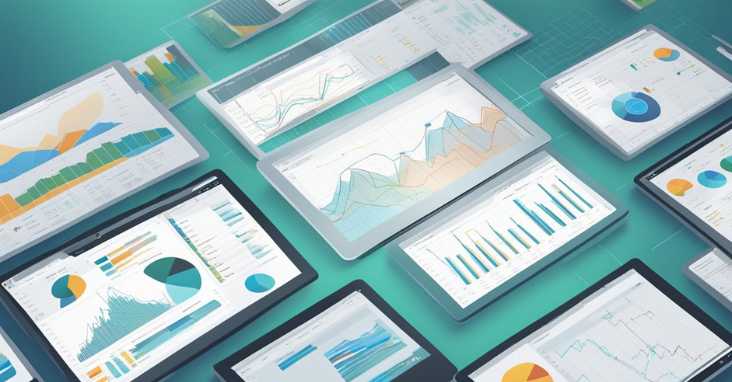
In today’s fast-paced business environment, staying up-to-date with industry trends and consumer behavior is crucial for any organization seeking to gain a competitive edge. Competitive intelligence tools can help businesses track these trends and adapt their strategies accordingly.
Tracking Industry Trends and Innovations
One of the key benefits of using competitive intelligence tools is the ability to track industry trends and innovations. By monitoring industry news, product launches, and other relevant information, businesses can stay ahead of the curve and identify new opportunities for growth.
For example, by using tools such as Google Trends and SEMrush, businesses can track search volume and keyword trends in their industry. This information can help them identify emerging trends and adjust their marketing strategies accordingly.
Understanding Customer Insights and Reputation
Another important aspect of competitive intelligence is understanding customer insights and reputation. By monitoring customer reviews, social media mentions, and other sources of feedback, businesses can gain valuable insights into their customers’ needs and preferences.
Tools such as Hootsuite and Sprout Social can help businesses monitor their social media presence and track customer sentiment. This information can be used to improve customer service, identify areas for improvement, and build a positive brand reputation.
Overall, by using competitive intelligence tools to track industry trends and consumer behavior, businesses can stay ahead of the competition and make informed decisions about their marketing and business strategies.
For more information on tracking industry trends and consumer behavior, check out this article from Forbes Agency Council.
Practical Applications and Case Studies

Success Stories of Competitive Intelligence Implementation
Competitive intelligence tools have been proven to be effective in providing businesses with the necessary insights to gain a competitive advantage. One such success story is that of Company A, which used competitive analysis tools to gain a deeper understanding of its competitors’ strengths and weaknesses. With this information, Company A was able to identify gaps in the market and develop new products that addressed those gaps. As a result, Company A was able to increase its market share and revenue.
Another success story is that of Company B, which used market explorer tools to identify new markets for its products. By analyzing market trends and consumer behavior, Company B was able to enter new markets and increase its customer base. This led to a significant increase in revenue and profits.
Learning from Competitive Intelligence Failures
While competitive intelligence tools can provide businesses with valuable insights, it is important to use them correctly and avoid common pitfalls. One common mistake is relying too heavily on the data provided by these tools without conducting additional research. This can lead to inaccurate conclusions and poor decision making.
Another mistake is failing to keep up with changes in the market and industry. Competitive intelligence tools can provide businesses with real-time data, but it is important to regularly analyze this data and adjust strategies accordingly.
By learning from these failures, businesses can avoid making similar mistakes and use competitive intelligence tools to their full potential.
Overall, competitive intelligence tools such as custom market research and enterprise intelligence can provide businesses with valuable insights into their competitors and the market. By using these tools correctly and analyzing the data provided, businesses can gain a competitive advantage and increase their revenue and profits.
For more information on the practical applications of competitive intelligence tools, check out this article by Forbes.
Challenges and Considerations

Ethical Considerations in Competitive Intelligence
Competitive intelligence tools can provide valuable insights into a company’s competitors, but it is important to consider ethical considerations when using these tools. One of the main ethical concerns is the potential for using these tools to obtain confidential or proprietary information from competitors. This can include information about product development, pricing strategies, and customer data.
To avoid ethical issues, it is important to use competitive intelligence tools in a responsible and ethical manner. This includes only using publicly available information and avoiding any attempts to access confidential or proprietary information. It is also important to ensure that the use of these tools complies with all applicable laws and regulations.
Overcoming Common Challenges
While competitive intelligence tools can provide valuable insights, there are also several challenges that must be overcome. One common challenge is the sheer volume of data that these tools can generate. This can make it difficult to identify the most relevant information and to make sense of the data.
To overcome this challenge, it is important to use tools that provide advanced filtering and sorting capabilities. This can help to quickly identify the most relevant information and to focus on the key insights.
Another challenge is the need for ongoing monitoring and analysis. Competitive intelligence is an ongoing process, and it is important to continually monitor and analyze the data to identify new trends and opportunities. This requires a dedicated team and the right tools to ensure that the data is collected and analyzed in a timely and efficient manner.
Overall, competitive intelligence tools can provide valuable insights into a company’s competitors, but it is important to consider ethical considerations and to overcome common challenges when using these tools. By using these tools responsibly and effectively, companies can gain a competitive edge and stay ahead of the competition.
Here is an external resource that provides further information on ethical considerations in competitive intelligence.
Frequently Asked Questions
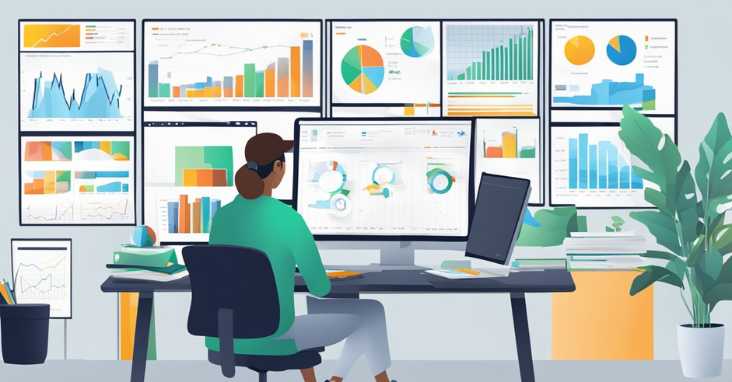
What are some examples of competitive intelligence tools used in various industries?
Competitive intelligence tools are widely used across various industries to stay ahead of the competition. Some popular examples include SEMrush for digital marketing, Owler for company insights, and Crayon for product and pricing intelligence. These tools provide businesses with valuable insights into their competitors’ strategies, strengths, and weaknesses.
How can businesses access free competitive intelligence tools?
There are several free competitive intelligence tools available online. Some of these include Google Alerts, Social Mention, and SimilarWeb. These tools can help businesses monitor their competitors’ online activities, social media presence, and website traffic. However, it is important to note that free tools may not provide the same level of insights as paid tools.
What are the most effective competitive intelligence techniques for the pharmaceutical industry?
The pharmaceutical industry is highly competitive, and businesses need to stay up-to-date with the latest developments to remain competitive. Some effective competitive intelligence techniques for this industry include monitoring clinical trials, tracking patent filings, and analyzing regulatory changes. These techniques can help businesses identify new opportunities and stay ahead of the competition.
Which competitive intelligence tools are considered the best in the current market?
There are several competitive intelligence tools available in the market, each with its own unique features and benefits. Some of the best tools in the current market include Ahrefs, SEMrush, and SpyFu for digital marketing, Crayon for product and pricing intelligence, and Owler for company insights. It is important to choose a tool that aligns with your business needs and goals.
What are the innovative ways to gather competitive intelligence?
Innovation is key to staying ahead of the competition, and businesses need to constantly explore new ways to gather competitive intelligence. Some innovative techniques include using machine learning and artificial intelligence to analyze data, leveraging social media listening tools to monitor online conversations, and conducting primary research through surveys and interviews.
What are the primary sources of competitive intelligence?
Competitive intelligence can be gathered from a variety of sources, including public sources such as news articles, press releases, and regulatory filings. Private sources such as customer feedback, sales data, and employee insights can also provide valuable insights. Additionally, businesses can leverage competitive intelligence tools and services to gather insights from multiple sources and gain a comprehensive understanding of their competitors.
For more information on competitive intelligence tools and techniques, check out this guide by CIO.



